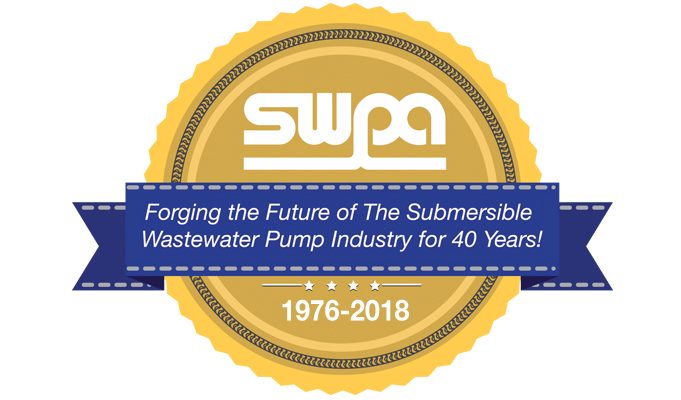With the advent of smart pumping technology, an increase in the level of automation, and the ability to monitor system performance via the Internet of Things, the duties of today’s pump station manager have changed radically from even five years ago. In this month’s SWPA Insight, SWPA Executive Director Adam Stolberg asks Jeremy Drinkwine, program manager of custom panels for SJE-Rhombus, and John Lord from Homa Pump Technology to share their experiences in how pump station managers can best prepare for the needs of the market.
How does more automation and “smart technology” entering the pump market change the responsibilities and requirements placed on pump station personnel?
This is an interesting question because I don’t know that there is only one answer. This could be answered multiple different ways by many people in the industry. With the advancement of technology, some could say the responsibilities increase. The operator would need to be familiar with programmable logic controllers and touch screens. With advancing controls comes redundancy in the lift station. The use of submersible transducers with floats as a backup become more common. This increases the time it may take to troubleshoot, repair, or perform preventative maintenance on the systems.
But with advancing technology, smart technology allows more exposure to how the pump is operating, how soon the pump is due preventative maintenance, and when applicable what could be wrong with the pump. By incorporating remote monitoring, station managers can have twenty-four-hour access to how the system is performing.
How important is continuing education for those working in the pump industry?
It is critically important. Not only to maintain local and state licenses, but to stay on top of the changes in equipment and technology. Also, there is an accelerated rate of change in the last five to ten years. As the use of smart technology expands it will continue to change year to year.
How do you see professional organizations like SWPA providing value for pump professionals?
SWPA as an organization has controls and pump companies as their members. The organization can provide insight and training on the system. With a mix of 100 and 200 level courses there is something for everyone to gain more knowledge with SWPA training. But for those that cannot attend meetings, SWPA also has online training classes. This type of technology allows those to pick and choose the class they want to view. This type of on-demand platform allows individuals to view the training when time allows.
In the Systems Approach, each component is assessed to predict a pumping system’s peak performance. From that point of view, what characteristics best assess the performance of an operator, technician, or manager?
First, I believe it’s important to note that those that design and those that operate a pump system might have different views on how to achieve “peak performance.” We all would like the most efficient pump operating at BEP and a control system that operates the pumps only in the most efficient way. That can’t be done in all cases, so engineers will design the most efficient pump for the given design conditions. As an operator all the above is important, but more important is a pump station that is problem free without clogging, hung up float switches, or other issues.
An experienced operator/technician/manager is key in what is needed in any given system. If a pump station is being installed in a problem area (nursing home, prison, or schools) the most efficient pump or an on/off float system might not be what you need for peak performance. You might use other less efficient pump options like a vortex, chopper, or cutter style pumps and maybe submersible transducer versus floats to avoid call outs and added expense.
Operators know their system and what works in various situations, so to ensure they get what they want in their systems they should make sure they are heard by designers and suppliers or live with the consequence of a system that might not achieve peak performance. In knowing their system, the operators have the ability to predict and prevent issues from arising through a preventative maintenance schedule and Implementation. They also possess the ability to be flexible when less than ideal circumstances arise in their systems.
JOIN SWPA TODAY
SWPA bylaws list membership qualifications as follows:
- SECTION 1: Eligibility for Regular Membership. Firms, partnerships, corporations, or other types of business enterprises which are actively engaged in either (a) the manufacture and sale of or (b) the sale on substantially a nationwide basis in the United States of America of one or more industry products as defined in Section 2 hereof are eligible for Regular Membership in the Association.
- SECTION 2: Industry Products. Industry products are defined as submersible wastewater pumps that can efficiently handle solids. Industry products may also include such other products as the Association’s Board of Directors may from time to time determine are industry products.
- SECTION 3: Eligibility for Associate Membership. Persons, firms, partnerships, corporations, or other types of business enterprises which are actively engaged in the manufacturing of parts or equipment distributed on a nationwide basis for the types of submersible wastewater pumps manufactured by the members hereof, and for systems utilizing such pumps, are eligible for Associate Membership in the Association.
To become a member of SWPA today, complete the membership form on www.swpa.org.
_______________________________________________________
MODERN PUMPING TODAY, May 2018
Did you enjoy this article?
Subscribe to the FREE Digital Edition of Modern Pumping Today Magazine!
![]()


